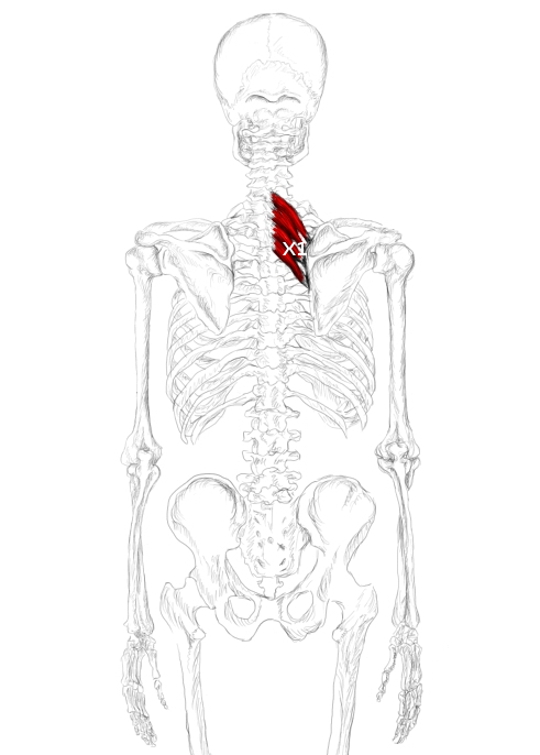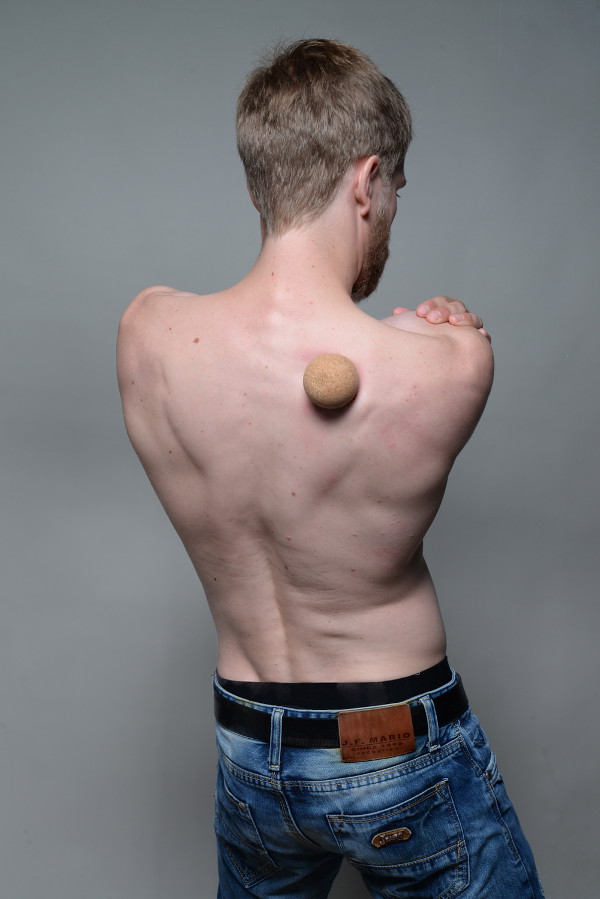2.2 Self-massage with a towel
Pain under the shoulder blade could also be relieved with a towel, however banal it may seem.
- Roll a small towel into a tight roll.
- It is important that it is firmly and tightly rolled. Otherwise, it will not be hard enough and you won’t be able to exert enough pressure.
- Once the towel is rolled up, you can either tape the ends or completely wrap it in tape so that it doesn’t “unroll”.
- As an alternative to a towel, a small, very thin rug can be used. This is naturally harder, which will come in handy for the massage.
- Put your towel on the floor.
- Now lie down on the floor and place your upper back on the towel. Your place on your back where your upper shoulder blade is located should come into contact with the towel.
- Place your feet on the ground – this will stabilize you – and cross your arms in front of your chest.




